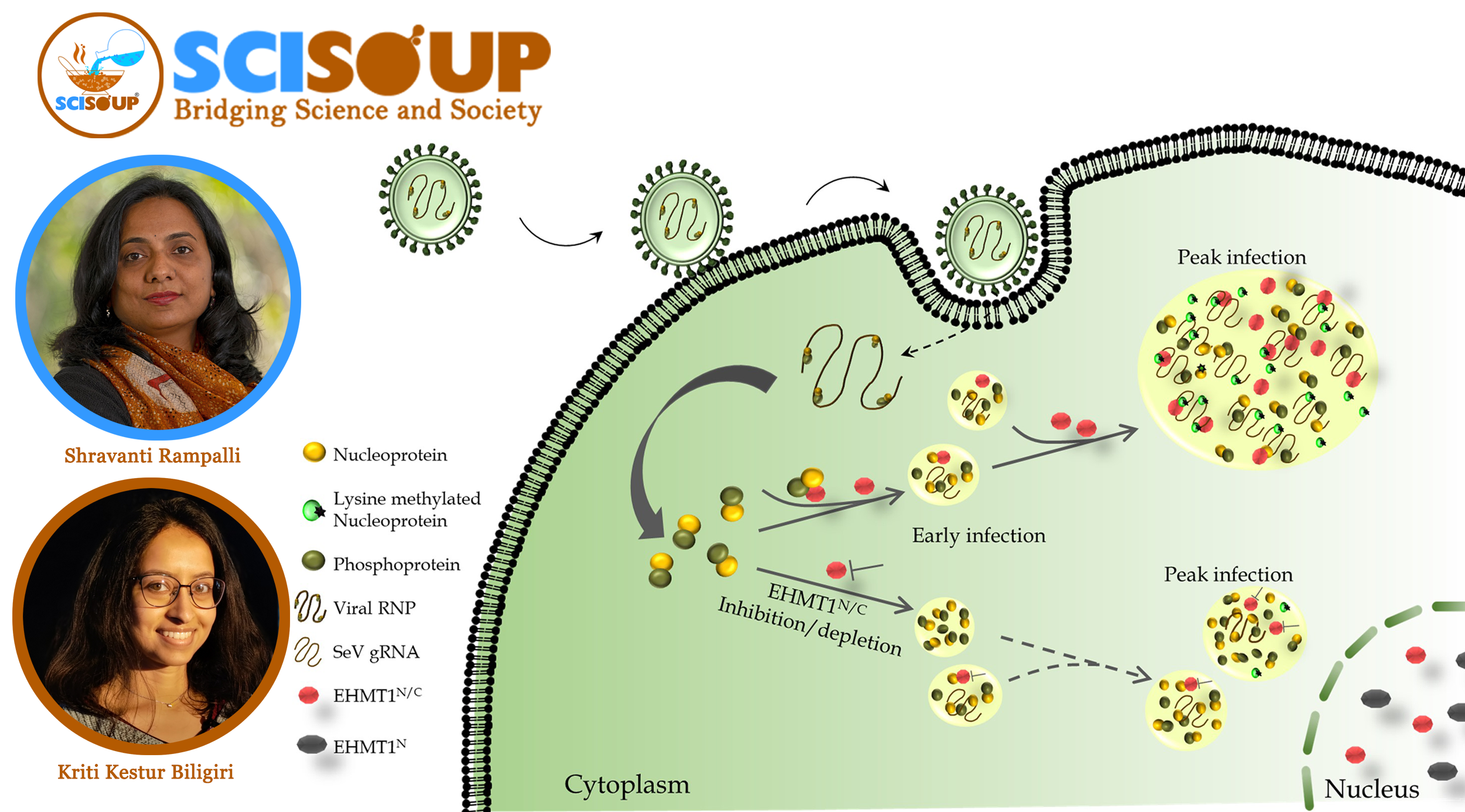
Researchers uncover an unexpected role of EHMT1, opening doors to new antiviral therapies.
JANUARY 12, 2025 | BY RATNESHWAR THAKUR
Scientists at the CSIR–Institute of Genomics and Integrative Biology (IGIB), New Delhi, have identified an unexpected role for a host protein, EHMT1, in aiding viral replication. This finding reshapes our understanding of how viruses exploit host cells and unveils a promising target for future antiviral therapies.
Viruses are notorious for their adaptability, often mutating to evade treatments. This has led researchers to focus on host factors—proteins and molecules within cells that viruses depend on to survive and replicate. EHMT1, previously thought to function solely within the nucleus, has now been shown to play a critical role in the cytoplasm during viral invasion.
EHMT1 is an enzyme known for modifying specific DNA bound proteins to silence genes and compact DNA in the nucleus. However, the new research highlights its unexpected role in the cytoplasm, where it forms specialized structures called condensates. EHMT1 interacts with viral proteins within these condensates, stabilizing them to promote the formation of viral replication organelles. These organelles act as protective hubs for viruses, shielding them from the immune system and enabling efficient replication.
By targeting the cytoplasmic form of EHMT1, researchers were able to disrupt the formation of replication organelles, effectively halting viral propagation. This breakthrough positions EHMT1 as a promising candidate for antiviral drug development, particularly in the context of emerging pandemics. The results of this study have been published in the Journal ‘PLOS BIOLOGY.’
EHMT1 has previously been associated with diseases such as cancer and neurodegenerative disorders, with its effects primarily linked to its nuclear functions. The discovery of its cytoplasmic role expands our understanding of its broader impact on cellular processes and disease mechanisms.
Lead author Kriti Kestur Biligiri says, “The study’s origins were unexpected. We were initially investigating cell fate transitions using RNA viruses as vectors when we observed the unexpected cytoplasmic condensates.” Here “cell fate transition” refers to the processes by which a cell changes its identity or function in response to internal or external signals. “Observing cytoplasmic condensates during these experiments transformed a routine investigation into a deeper exploration of how viruses exploit host proteins,” she added.
Dr. Dasaradhi Palakodeti, an Associate Professor at the Institute for Stem Cell Science and Regenerative Medicine, stated, "This study sheds light on the non-canonical function of EHMT1, a known histone methyltransferase, in regulating viral pathogenesis. The key discoveries of this study pave the way for the development of novel antiviral therapies." Dr. Palakodeti is not part of the study.
Dr. Srikar Krishna Gopinath, a Postdoctoral Associate at Yale School of Medicine, stated, "This study uncovers the crucial role of EHMT1 in Sendai virus replication. The discovery of a novel cytoplasmic form, EHMT1N/C, demonstrates how intricately viruses interact with host cells. Understanding these processes could lead to treatments for viral infections and diseases like cancer." Dr. Gopinath is not part of the study.
This study highlights the importance of understanding virus-host interactions, with targeting host factors like EHMT1 offering potential for broad-spectrum antiviral therapies and new treatment strategies against infectious diseases.
The research team included Kriti Kestur Biligiri, Nishi Raj Sharma, Praveen Kumar Vemula, Debi Prasad Sarkar, Abhishek Mohanty, Shravanti Rampalli. The study was supported by funds from DBT/Wellcome Trust India Alliance, Department of Biotechnology (DBT), Ministry of Science and Technology, Govt. of India.
Journal Reference:
A cytoplasmic form of EHMT1N methylates viral proteins to enable inclusion body maturation and efficient viral replication
Disclaimer:
SciSoup claims no competing interest. To ensure accuracy and scientific relevance, this science blog has been reviewed by the research team involved in the study.
